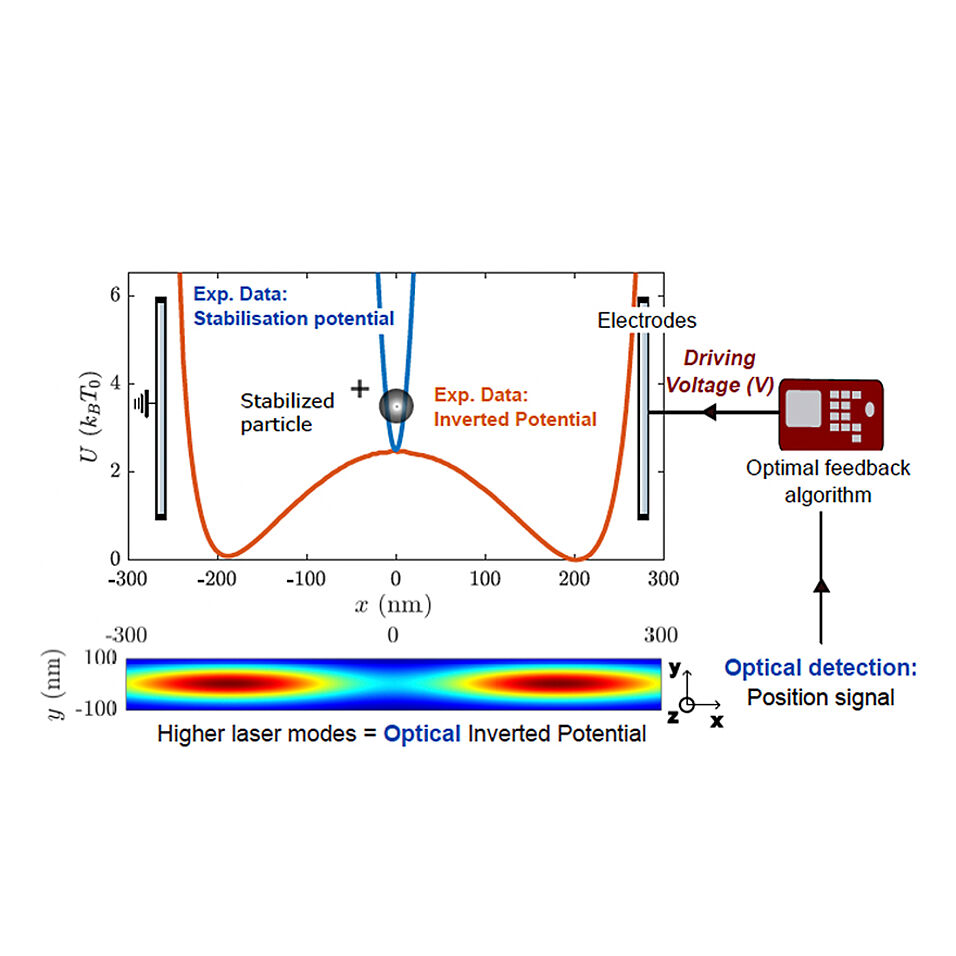Optical trapping conventionally relies on the confining optical forces coinciding with intensity maxima of light fields. Unavoidable optical absorption leads to heating of the particle, which severely restricts the (spatial and temporal) extent of motional quantum states through decoherence due to blackbody radiation. Here we circumvent this problem by introducing FLIP: feedback levitation on an inverted potential, which allows to stabilize a dielectric nanoparticle at an intensity minimum. More specifically, we use a combination of optical readout and electrostatic feedback control to confine a particle in the intensity minimum of an inverted potential produced by an optical double-well. The double-well potential is oriented in transverse direction to the tweezer axis and formed by overlapping a TEM00 mode and a TEM10 mode of the incoming laser beam. Along the other directions, the trap is harmonic.
Our configuration results in optical frequencies of -50 kHz at the unstable potential maximum at the center of the double well, and 65 kHz at the stable trapping positions of the two wells, located at a distance of approximately +/- 200 nm from the beam axis. Negative resonance frequencies correspond to the negative stiffness of the inverted potential. Optical readout of the particle motion is obtained via a standard detection scheme based on interference between the TEM00 mode and the light scattered by the particle. The TEM00 beam is actively stabilized using piezo-controlled mirrors to prevent drifts in position detection. The detection signal is processed via an FPGA and used to apply feedback control to the charged silica nanosphere electronically, via a pair of electrodes mounted along the double-well axis. The experiment is performed with 210 nm diameter silica particles at a pressure of 1.5 mbar. By using a Kalman-filter-based linear-quadratic-Gaussian (LQG) control method, we confine a particle to within 9 +/- 05 nm of the potential maximum at an effective temperature of 16 K in a room-temperature environment. Despite drifts in the absolute position of the potential maximum, we can keep the nanoparticle at the apex by estimating and autonomously compensating the drift from the particle dynamics using the Kalman filter.
Our FLIP protocol may enable new levitation-based sensing schemes and paves the way for optical trapping at zero intensity of an optical potential, which alleviates decoherence effects due to material-dependent absorption and is relevant for future macroscopic quantum experiments.
Publication:
Stabilizing nanoparticles in the intensity minimum: feedback levitation on an inverted potential
S. Dago, J. Rieser, M. A. Ciampini, V. Mlynár, A. Kugi, M. Aspelmeyer, A. Deutshmann-Olek, N. Kiesel
Optics Express 32, 45133 (2024) - arXiv-Version

